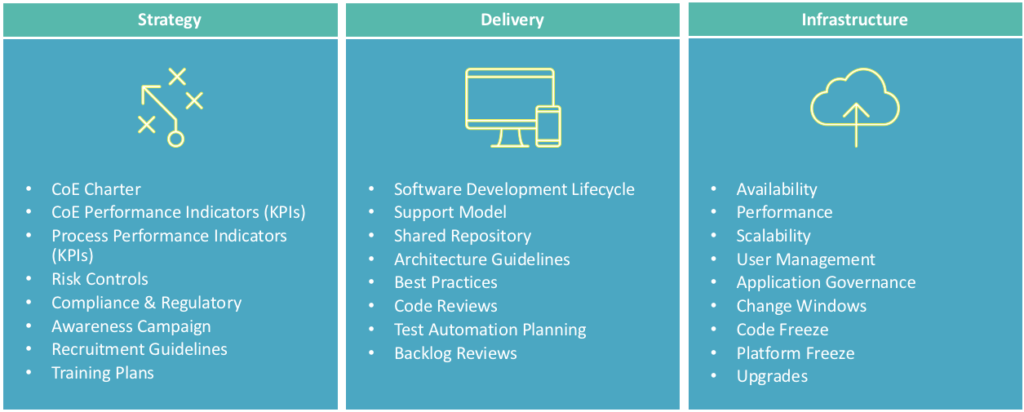The first couple of process automation projects is usually surrounded with excitement and enthusiasm. You have the necessary support from your sponsor and extraordinary help from the vendor as well. There is some leniency in the practices that you follow to deliver these pilot projects (a.k.a. PoC, quick win). Everyone has a vested interest at this point, everyone is trying to prove a point.
Center of Expertise (CoE)
Quite a few initiatives fail right at the beginning, and the remaining fail to grow beyond one or two projects. Over time, the level of enthusiasm will decrease, and you no longer will be able to use lightweight implementation processes. To stay on track and grow you will need to formalize your program. A Center of Expertise (CoE) can be an exceptional tool that helps you expand your program in a managed way.
 Figure 1 – Digital Transformation Initiatives Failure Percentage
Figure 1 – Digital Transformation Initiatives Failure Percentage
Unfortunately, the majority of the traditional methods of establishing a CoE, end up producing just one heavyweight body that slows down the progress while becoming a major cost center. A CoE should be a lean organization that works behind the scenes, without becoming a behemoth that simply consumes money.
There are three main components of a successful CoE.
- Strategy
- Delivery
- Infrastructure
We are not going into details of how to create a CoE, but the reason for adding this topic to the book was so that you understand what comes next. Figure 2 below shows major responsibilities of each component. Depending on the size of your program these responsibilities could be performed by three different teams, a single team or even an individual. Make sure to keep your CoE lean, and avoid making it a major cost center that can actually bring down your entire program.

Figure 2 – Center of Expertise Responsibilities